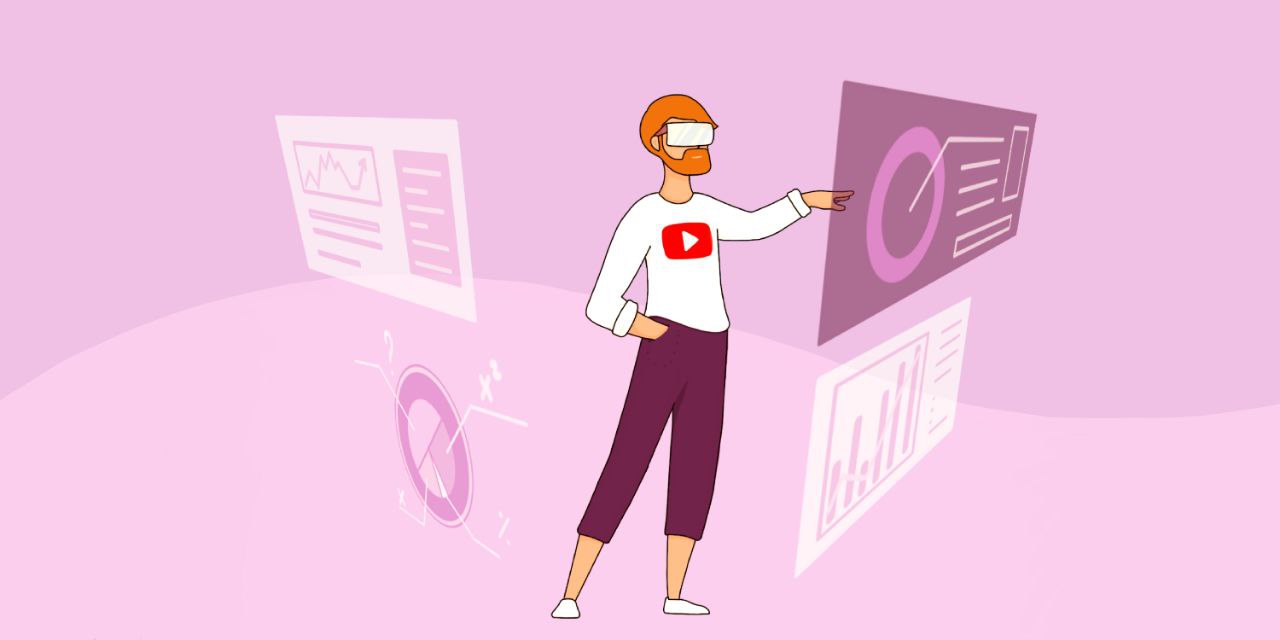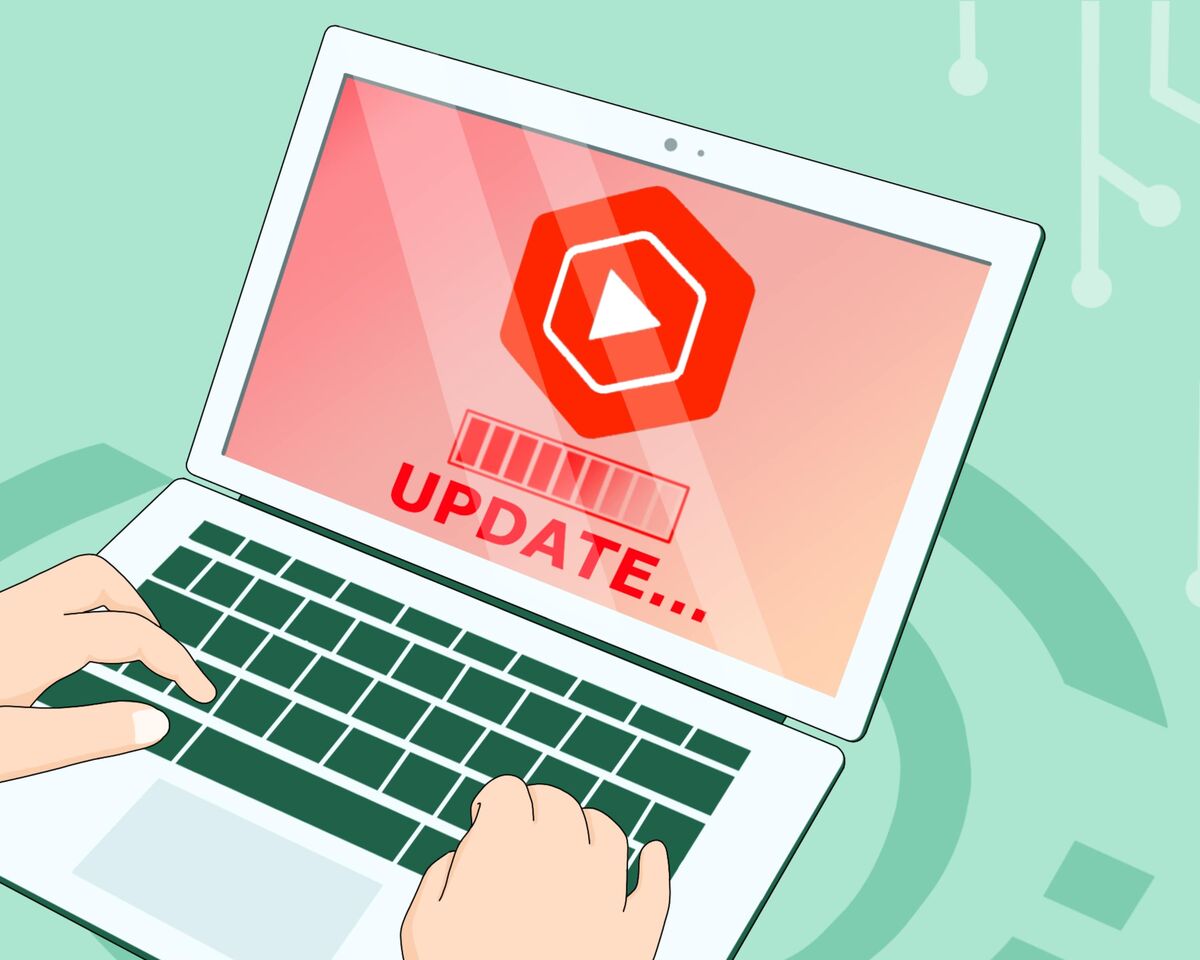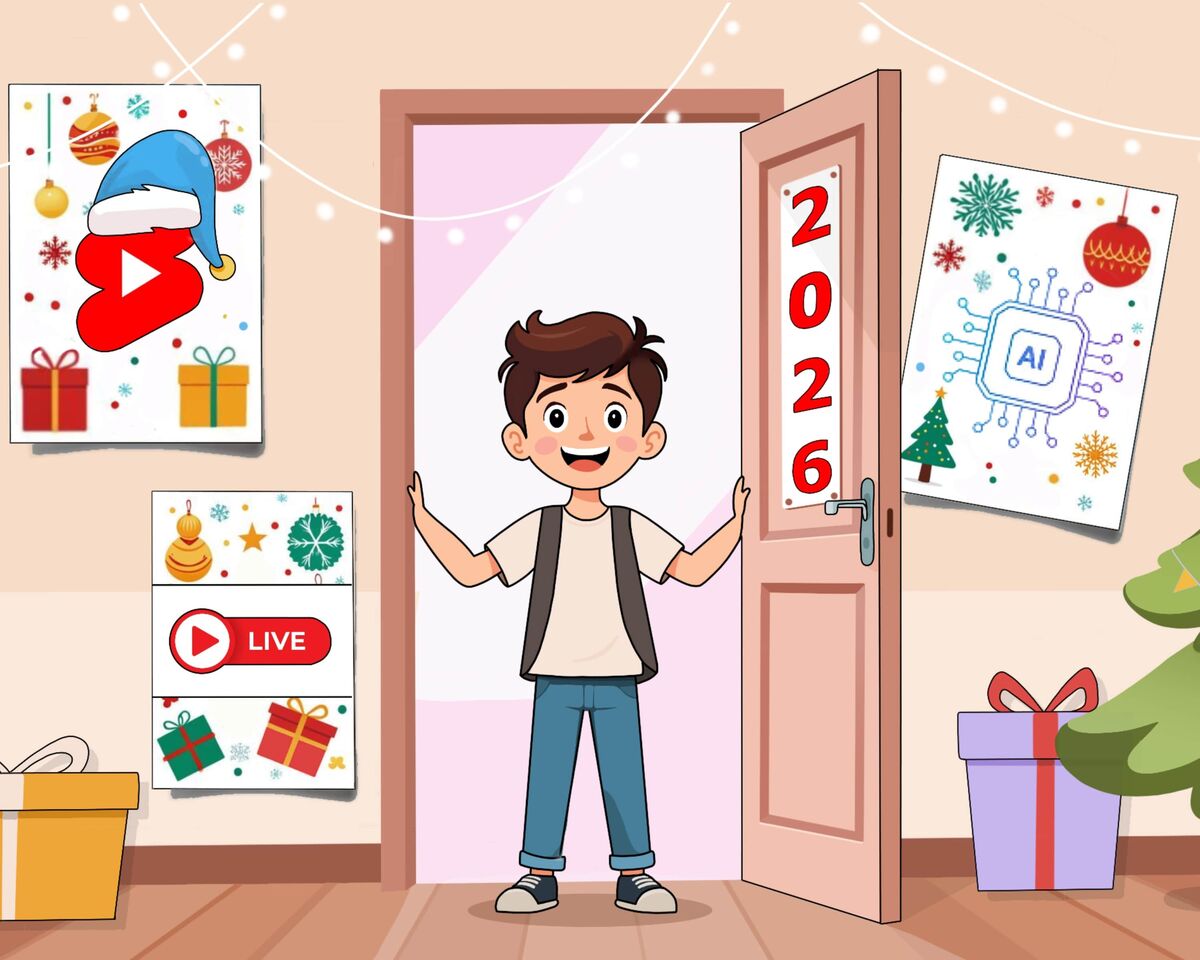YouTube Trends: How to Create Content of the Future

The rules of the YouTube game change rapidly. Not long ago, we were focused on creating powerful, dynamic intros. However, we have since discovered that these intros can actually harm retention. Things change fast.
Previously we believed that long educational videos are the most sought-after content. However, Shorts, with 30-second snippets of semi-useful material quickly took over.
But before you lose hope, it's not all bad. Let's explore which trends are outdated, what attracts subscribers, and which formats are worth focusing on.
How to create the content of the future
The 2010s marked the rise of the new internet we live with today. This decade saw social media evolve from a fun tool for communication into a marketing behemoth. Content creators emerged, and informational products flourished. As a result, new formats were created. In 2011, Snapchat appeared, paving the way for vertical content.
Three years later, we saw the advent of Musically, followed by various platforms like Likee, Vine, Kwai, Yappy, and of course, TikTok.
Why this backstory? Short-form content has significantly influenced how we consume videos today. Long and monotonous intros, once watched without complaint for their aesthetic appeal and unique contribution to the content, are now considered outdated. Today's creators need to get straight to the point quickly, or risk losing their audience's attention immediately.
Attention spans are continuously shrinking, a trend that's here to stay as our pace of life accelerates. It's crucial to accept this reality, even if it feels challenging.
We no longer have the luxury of easing into our content; we must engage our audience immediately.
To craft a captivating introduction, you need one key element: knowing your audience. While it may sound simple, it’s not always easy. When preparing your video script, don’t write the intro just to please yourself. Instead, ensure you think, “Yes, this is exactly what my audience wants to hear and see.”
Here's a little spoiler: you can easily skip writing a full script. However, the introduction is the part you must work on the hardest. It needs to be polished to a high level, so don't improvise unless you're a professional stand-up comedian or orator.
At the very least, outline a plan to follow. You need to decide what will grab viewers' attention right now. What are they thinking about, worrying about, discussing? These questions should shape your introduction.
Short-form content has undeniably changed our lives. But that doesn't mean that Shorts have completely taken over. Long-form videos are still evolving.
How did we shift so abruptly from 90-minute movies to runtimes of 2-3 hours? Previously, only Marvel, The Hobbit, and other fantasy films boasted such lengths. Now, we see a different picture.
Consider the films nominated for an Oscar this year. While it’s understood that films aiming for this award have unique audience targeting, even a seemingly simple comedy like "Barbie" runs for a full 2 hours. This shift reflects broader changes in the industry and audience expectations.
YouTube is no exception in this regard. YouTube will always reward creators who manage to hold viewers' attention longer. If you're faced with the choice of making a short, five-minute video with 80% retention or creating a longer, twenty-minute video with 50% retention, you should choose the latter.
First, achieving even 50% retention is an excellent result. Second, the time viewers spend on your channel will be significantly greater in the second scenario. For YouTube, the most important factor is how long viewers stay on your channel.
In a recent interview, blogger, marketer, and business expert Jade Beason shared very important information for all creators. We quote his main point below.
"Many creators think: 'I have subscribers, but not enough watch hours.' I've noticed that this is a common mistake. They focus on getting those watch hours and try to achieve 100% retention. They think, 'I need to make a video, upload it, and ensure 100% of viewers watch most of it.'
I analyzed the data in YouTube Studio and realized that while it's great that you're striving for high retention, which definitely improves the quality of your content, if you keep uploading 5-minute videos with 80% retention, it's good for your channel. But if you want to increase your watch hours, you'll have to put effort into creating longer videos. Sure, you might only get 50% retention on a 5-minute video—that's about 2 minutes. But if you get 50% watch time on a 20-minute video, then you already have 10 minutes of watch time. Multiply that by the number of people who watched the video, and YouTube sees that people are not only watching your content but also spending significant time on your channel, for instance, 10 minutes.
YouTube, like any other social network, understands and rewards creators who keep viewers on the platform for as long as possible."
However, when you hear advice to make your videos longer, it doesn't mean you should artificially extend the duration.
Let's look at a list of items to avoid:
- Flooding your videos with unnecessary content
- Adding material without considering if it's relevant to the topic
- Dwelling too long on a single topic after you've already covered everything
- Extending your sign-off with too many examples
This list can go on forever. But the most important thing you need to understand is that people can tell when you're cramming fluff into your content.
When your video flows smoothly, organically, and structurally, viewers won't want to turn it off.
However, if your content turns into a torrent of random thoughts, it becomes overwhelming and somewhat disrespectful of your viewers' time.
How to work with the Shorts format
Shorts on YouTube will continue to evolve. Currently, we see a more relevant feed that offers videos based on our interests compared to what it was a couple of months ago. Some creators are completely shifting away from long-form content and focusing solely on Shorts. This isn't necessarily bad. But what's important now? What are some of the main mistakes creators make?
One unsuccessful strategy is chopping up long videos into pieces. This means taking a long video and cutting out the funniest, most useful, or even irrelevant bits, which won’t motivate viewers to watch the entire video. A common example is stand-up comedy clips. You might stumble upon a punchline, laugh, and move on. You’re unlikely to be interested in the whole stand-up show because the punchline was the funniest part.
If you've decided to upload short videos alongside long-form content, make sure the Shorts format is self-contained. Your short video should also have structure and convey some meaning, whether it's useful or entertaining. You can create snippets from long-form content, but make it a complete piece. Add an introduction, conclusion, some new thoughts, so the viewers understand the message and learn something interesting from the Short.
If you want both long-form and short-form videos to gain views, they shouldn't conflict with each other but rather complement each other.
Trust is key to successful content
Since 2020, there has been a powerful spread of disinformation through digital media. Unfortunately, the prevalence of fake news and misleading content is unlikely to decrease.
In 2016, the research team of the Our World In Data portal conducted a survey on the level of trust by countries. This data was updated in 2024, providing a more current view.
The end result revealed a complete failure — trust levels in interpersonal, political, and governmental relations are currently at their lowest in the last 40 years.
Unfortunately, the concept of authenticity in content creation has been distorted. Many believe that expressing oneself through scandals, tears, deceit, and tragedies is sincere. But this is not the case. It’s sensationalism, and most people are fed up with it.
Authenticity is not about showing yourself in the worst light. Honesty does not mean airing dirty laundry. You should present yourself authentically, showing your true self and genuine reactions. This approach fosters loyalty. Always aim to showcase a genuine view of yourself.
Is personal branding a trend or nonsense?
The term "personal brand" is not just a pompous phrase from the internet.
The concept of a personal brand emerged back in 1937. It was coined by Napoleon Hill in his book "Think and Grow Rich!" Before that, people developed their personal and professional identities intuitively.
Therefore, you should not underestimate the importance of this concept. You need to play by its rules.
However, when you are just beginning as a YouTuber, you should not immediately establish a personal brand. You haven’t built up enough authority yet. One of the main components of a personal brand is the audience’s trust, which needs to be earned over time.
However, you can start sowing the seeds now, preparing yourself for how you will appear in the eyes of new viewers. What will they see when they look at your channel? What impression will they get?
- The most simple step available to you is branding your channel.
Before uploading your first video, please make sure to consider the impression you will leave on the viewer. This can be established with your banner, avatar, and channel description.
- The second step is more difficult - this is what makes you unique?
Maybe you have an unusual hairstyle, a distinctive appearance. Or perhaps you snort when you laugh and can't hold it back. Tattoos, voice, facial expressions — all of these could become your unique selling point, laying the foundation for your personal brand.
Don't say you're not unique. That's not true. There's no one else like you in the world. Well, except for twins, of course :D But even twins can have different personality traits, different interests, and simply — different styles in clothing. So, stop thinking in terms of "I'm not unique." Instead, start asking yourself, "What makes me unique?"
Rules that are no longer valid
Below are some common mistakes you want to avoid.
- “Making money with a YouTube channel depends on your niche”
There's no such thing as a "profitable" niche. You can run a financial channel and still not succeed. It all depends on the amount of effort you put in and the quality of your content.
Right now, it's impossible to say definitively which niche can bring in more profit. That would be unfair. Many creators sell courses with promises like "after this course, you'll find Zen and manifest wealth."
Some make millions dancing to the latest hits, while others use manual labor to sell something useful and interesting. Do you understand? There are no boundaries here. The key is knowing how to sell.
If you think a narrow niche can't lead to a good income, consider the following: small creators can sell high-quality products for large amounts.
There are many ways to earn on YouTube but you must be able to think outside of the box.
The key to success lies not in the niche, but in understanding your audience. However, you might lack the goal, time, or desire to search for your target viewer. Instead, you just create content haphazardly, perhaps believing that it suits everyone. But as adults you should know that you can’t randomly create content and expect people to enjoy it. You need to plan and define who your target audience is.
If you think your audience is everyone on the planet, and if you're creating "for everyone," then you're essentially focusing on no one.
You want to ensure your videos deliver a unique vibe that resonate deeply with your intended viewers. People are drawn to videos for both the topic and the content creator. The more you open up to your audience, the stronger their bond with your channel becomes.
Top trending tools
Modern technologies are what allow us to stay relevant at all times. Only by embracing these technologies can we prolong our presence on YouTube.
- ChatGPT: It will literally help you write scripts and unearth the most complex information
- Google Trends: It's one of the best tools for creating content plans and finding relevant topics. Since YouTube is a Google product, all its products are interconnected and aimed at productive work.
- Various neural networks like Sora. "Various" because many companies are interested in neural networks and are launching all sorts of new and interesting projects. These tools will help you create unique thumbnails, images, and visuals instead of relying on regurgitated stock content.
Last but not least in this list of tools is your brain.
Begin to think like a creator. Tune into your wave of creative thinking. Try to film anytime, anywhere. Strive to evaluate everything from a creative perspective.
If you are serious about developing your channel, you'll unconsciously start noticing details. Watch movies in the evenings and catch ideas from characters' dialogue. Note where and what you could use in your videos. Train yourself to see hooks for your work in everyday, mundane things. This way, your content plan will never run dry. Good luck!




